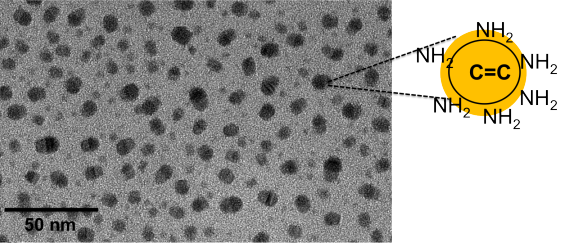Research
Carbon Quantum Dots
| Principal investigator: |
Carbon quantum dots (CQDs) have recently emerged as an interesting class of materials. They possess useful optical and electronic properties associated with their nanoscale structures in conjunction with chemical functionality. They have the potential to replace in the future the toxic metal-based quantum dots as they share traditional semiconductor-based properties (namely, size- and wavelength-dependent luminescence emission, resistance to photobleaching, ease of bio-conjugation). Such carbon nanoparticles are biocompatible, strongly luminescent and well-dispersible in various solvents showing bright promise for integration into devices of photovoltaic and light emitting applications. Their fluorescent properties are attributed to the core and surface state emission.

We are synthesizing such florescent carbon nanoparticles from renewable precursors such as chitin, algae or lignocellulosic biomass. The development of such new types of carbon dots will allow control of the fundamental properties of materials through size/shape effects, which will further allow new devices to be developed with distinctive properties and functions for numerous applications. Many interesting phenomena are expected in view of the remarkable quantum-confinement and edge effects. Their extraordinary optoelectronic properties may have important potential in many application areas. For example, the broad adsorption spectra of our resulting carbon dots, easy synthesis from a biomass precursor and their solution processable nature makes them ideal low cost-valuable sensitizers for various semiconductors-based solar cell applications.
Some reading:

